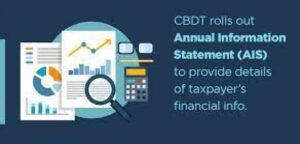 When a tax payer under-reports their income as compared to the total income displayed by the annual information system (AIS), it is the taxpayer’s responsibility to cross-verify the mis-match.
When a tax payer under-reports their income as compared to the total income displayed by the annual information system (AIS), it is the taxpayer’s responsibility to cross-verify the mis-match.
The income tax (I-T) department recently shortlisted 68,000 income-tax returns for e-verification for the assessment year 2020-21 on account of discrepancy in income.
This means the income showed in the system is more than what they have declared in their tax return. Now, taxpayers have time till March 31, 2023 to file an updated return to incorporate the discrepancy.
The department will start taking action only if the taxpayer fails to file an updated return or do not send a response by March 31, 2023.
This is why, the department recently urged tax payers to check if they have any objection to the displayed financial transactions in AIS (annual information system).
Annual Information Statement is a complete view of information for a taxpayer. In fact, AIS is an extension of Form 26AS that displays details of property purchases, high-value investments, and TDS/TCS transactions carried out during the financial year.
On the top of it, AIS also includes savings account interest, dividend, rent received, purchase and sale transactions of securities/immovable properties, foreign remittances, interest on deposits and GST turnover.
If tax payers feel that there is an error, they can raise an objection with the department. Upon raising the objection, the tax department will verify the income from the source, which could be any entity for example employer deducting TDS at the time of transferring of salary, or a bank at the time of transferring of interest income.
If the source admits that there was an error from their side, the matter would soon get closed.
And on the contrary, if the source confirms the income, the mismatch will continue. In that case, tax department may send a notice under the e-verification scheme.
In that case, tax payer can file an updated return under section 139(8a) of the IT Act, 1961.
The tax department further clarifies that all proceedings are conducted electronically under e-verification scheme, 2021. Now let us understand what exactly is e-verification scheme, 2021.
When a financial transaction reported by a source (e.g., bank deducting TDS while transferring interest income) is not considered by tax payer at the time of filing of income tax return, a process of identification of such mismatch is undertaken under the e-verification scheme.
At the outset, tax payer can intimate the department raising the objection. The department, thereafter, sends communication to the source seeking confirmation.
If the source confirms the information, the tax department can start proceedings under the e-verification for the taxpayer.
The taxpayer can send explanation or evidence through electronic means using the compliance portal (eportal.incometax.gov.in).
Source: https://mintgenie.livemint.com/news/personal-finance/income-tax-filing-why-is-this-important-to-cross-check-the-income-shown-on-ais-before-march-31-151678780918565
© 2018 CA Chandan Agarwal. All rights reserved.